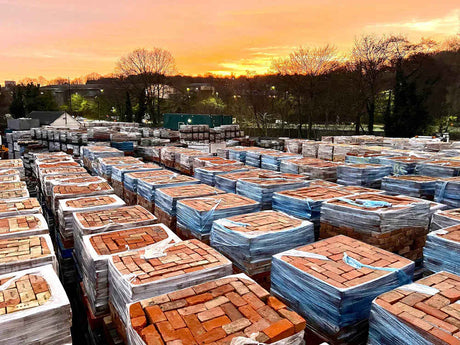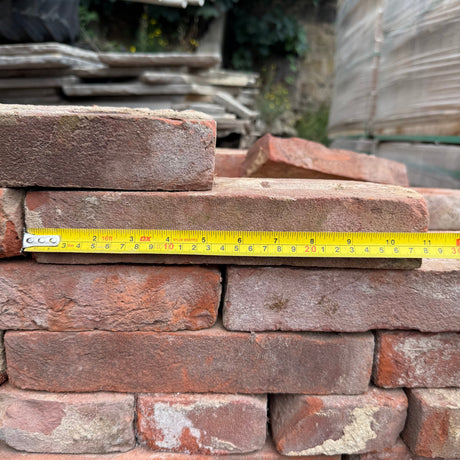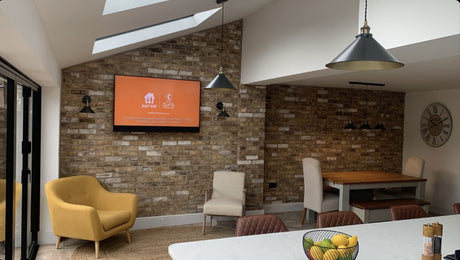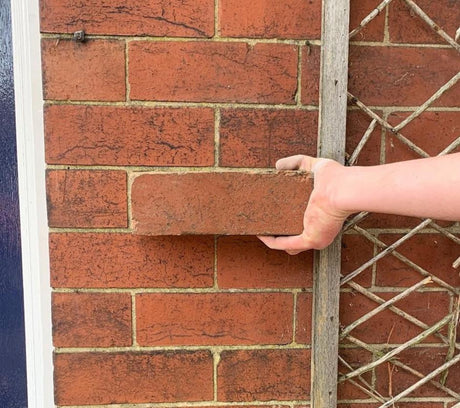Step-by-Step Guide
Installing Brick Slips
Brick slips are a brilliant way to achieve the look and texture of traditional brickwork—without the weight, depth, or hassle of laying full bricks. Whether you’re creating a feature wall in a kitchen, upgrading a fireplace surround, or cladding an outdoor façade, brick slips offer a versatile and stylish solution.
In this guide, we walk you through everything you need to know to install brick slips confidently—whether you’re a first-time DIYer or a professional installer.
What You’ll Need
Before you start, make sure you have the right materials and tools on hand:
Materials:
-
Brick slips (reclaimed or new clay)
-
Brick slip adhesive (flexible tile adhesive or recommended bonding agent)
-
Jointing mortar or grout
-
Spacers (typically 10mm)
-
Primer (if applying to porous surfaces)
Tools:
-
Notched trowel
-
Spirit level
-
Tape measure and pencil
-
Tile cutter or angle grinder
-
Pointing tool or grout bag
-
Sponge and bucket for clean up
Step 1: Prepare the Surface
Your surface needs to be dry, clean, and structurally sound. Suitable substrates include:
-
Plasterboard
-
Cement board
-
Blockwork or brickwork
-
Rendered walls
-
Painted surfaces (if paint is well-bonded)
For porous surfaces, apply a primer before fixing the slips.
Visit our range of reclaimed brick slips and new brick slips to get started.
Step 2: Plan Your Layout
Measure the area and plan your layout before applying any adhesive. Dry-lay a few slips to visualise the pattern and ensure consistent joint spacing. Mark your guideline with a spirit level to keep rows straight—especially important on larger walls.
Step 3: Apply the Adhesive
Using a notched trowel, apply a layer of brick slip adhesive to a small area of the wall—enough for a few slips at a time. Press each slip firmly into place using a slight twisting motion. Use spacers to maintain even joints, usually 10mm wide.
Start from the bottom centre and work outwards and upwards.
Step 4: Cut Slips to Fit
At edges, corners, or around sockets and switches, you’ll likely need to cut some slips to fit. Use a tile cutter, wet saw, or angle grinder depending on the type and thickness of your brick slips.
Step 5: Pointing the Joints
Once the adhesive has set (typically 24 hours), fill the joints using pointing mortar or grout. You can use a grout bag, pointing gun, or traditional mortar bag. Finish with a jointing tool for a flush or recessed look, depending on the style you want.
Allow the mortar to firm up, then lightly brush or sponge off any residue from the face of the slips.
Step 6: Final Clean and Seal (Optional)
Once everything is dry, give the surface a final wipe to remove dust or adhesive marks. For added protection—especially in kitchens or exterior projects—you may wish to apply a breathable sealant to the face of the slips.
Related Content and Next Steps.
Not Sure Where to Start?
We offer both reclaimed and new brick slips, cut in-house and ready for fast delivery. Order a sample pack online to see the finish up close and choose the perfect match for your space.
Explore reclaimed brick slips or new brick slips, or get in touch for expert advice.








